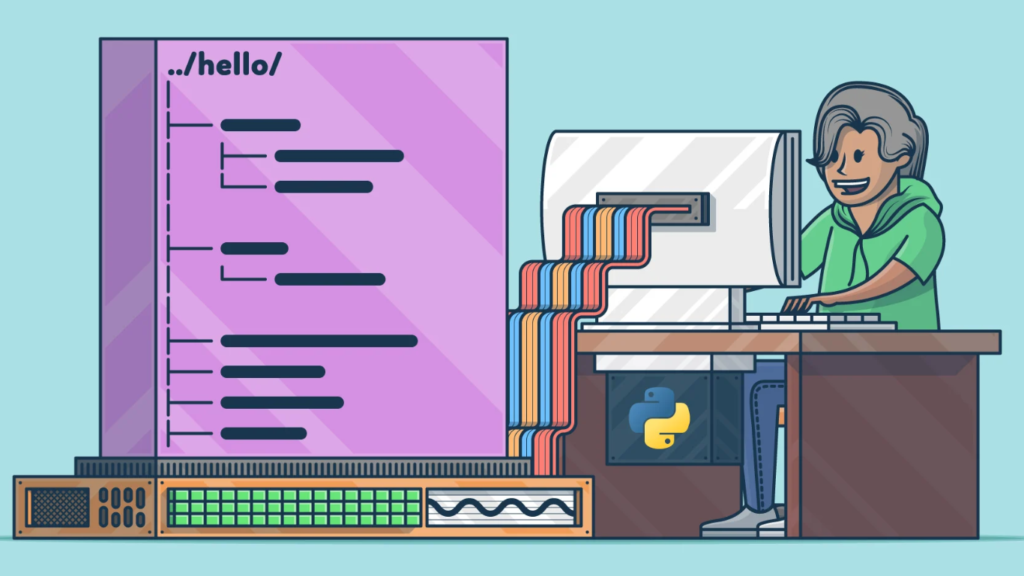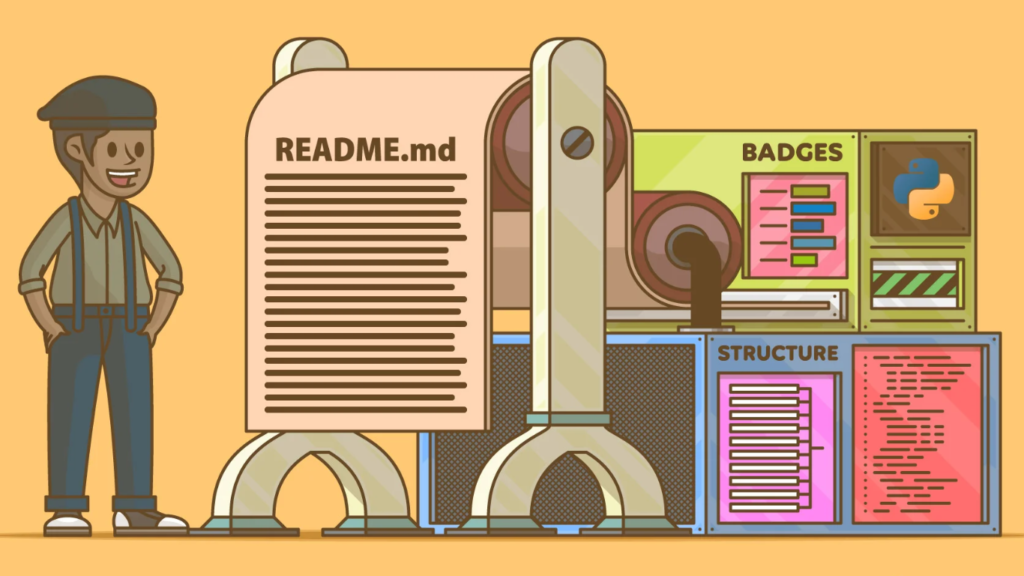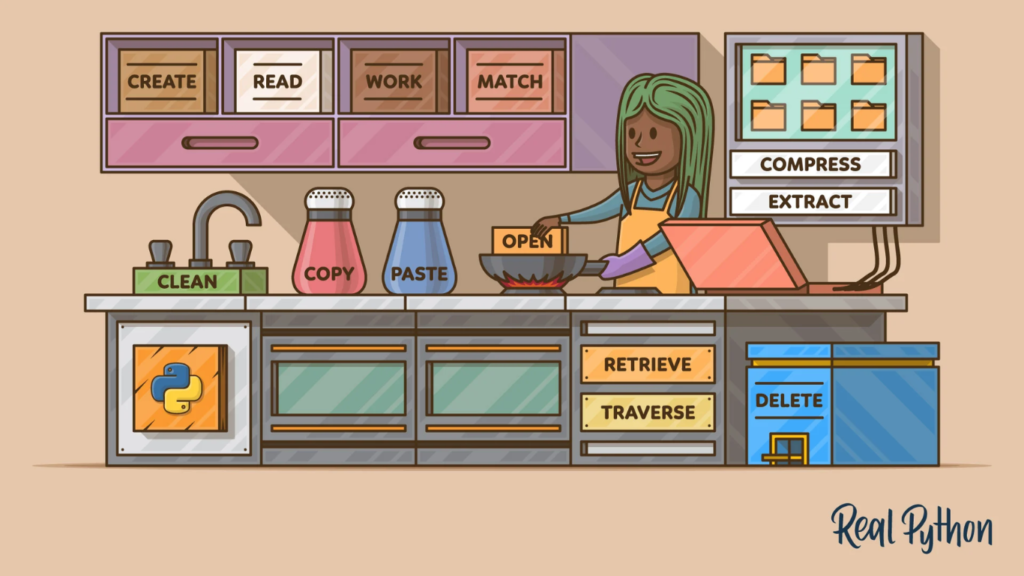These articles help beginners understand practical recipes and how the process of working with files happens using Python programs.
So, beginners or other programmers do not need to take any tension because I am here only to explain every one of the 13 lessons of practical recipes for working with files in Python.
You have to do only one thing: you have to complete the reading of the full article on Practical recipes.
Let’s start this article for you. I hope you guys like this article and is informative for you.

What is Practical Recipes:-
In Programming, It refers to the actionable done by programmers. It is a step-by-step solution performed for common tasks and problems frequently encountered by programmers while programming.
The recipes in this article mean small and self-contained code method that developers can easily follow and implement to achieve a specific result.
The term is often used in technical books, tutorials, and documentation to describe focused and practical examples that solve real-world problems. For instance, if you need to read data from a file, a “practical recipe” you have to go through the code of this article.https://realpython.com/courses/practical-recipes-files/.

In 13 lessons of practical recipes for working with files in Python, you can many things that how they can perform their function and complete the tasks.
- How to retrieve file properties
- How to create directories
- How to match patterns in filenames
- How to transverse directory trees
- How to manage temporary files and their directories
- How to delete all files and directories
- How to copy, paste, move, or rename files and directories
- How to create and extract ZIP archives

13 lessons of practical recipes for working with files in Python:-
Here you can see the 13 lessons on Practical recipes using Python programming.
This topic covered a wide range of tasks contained in practical recipes for working with files.
Let’s start reading and understanding the 13 lessons of practical recipes in the Python program.
- Overview and small description of Practical Recipes for working with files in Python – here you get an overview definition of practical recipes in Python so, that it helps you to understand better exactly what the practical recipes are and their main function.
- Python with open() as a pattern- in it, it works to read and write their code while programming. It also returns the file handle whenever needed and provides methods that can help and be used to read and write the data to the file.
- Getting a Directory Listing- it is a function of a web server that can cause a vulnerability and it can display the files that have no index file. It also provides and displays details information on files and directories used in it.
- Getting File Attributes- for storing file attributes with its files the PFS is responsible. It is a type of meta-data that usually works to describe and may modify the behavior of files and directories in the filesystem.
- Making Directories– making directories means making a folder of everything to keep something in it and safe for a longer time. We use md or mkdir MS-DOS command for making directories in it.
- Deleting files and directories- the process of deleting all the files and directories of practical recipes is deleted whenever needed. Unnecessary files you can easily delete from the code.
- Matching Filename patterns- arrange the files and directories in a pattern for further use. Match all the same files and directories in a sequence in a safe folder. Files and directories are very important in coding and programming.
- Traversing Directory Trees- all the files and directories folders present in the directory tree root. It works to provide root means space to all files and directories to put their things there in patterns.
- Creating temporary files and directories- it provides a file name to the file system. You can choose any random name for the files but keep in mind that the file name does not already exist.
- Copying, Moving, and Renaming Files- you can easily copy any file and directory and paste it anywhere. You can also move your file system to any place without any interruption. Easily you can rename your file and directory name later according to your mood.
- Archiving Files- it helps you to collect multiple files of data together into a single file for easily portable, storage, and easy to compress files in the file system.
- Reading multiple file inputs- from 1 to 11 lessons, you can learn all the processes of how to archive, copy, move, rename, transverse, and delete, etc files and directories. Here, you can read the multiple input of files that are generated while performing.
- Practical recipes for working with files in Python- it is the last lesson where you get a small and overall summary of all files and directories. After completing all 13 lessons do hands-on practice to understand better.

Summary of 13 lessons of practical recipes for working with files in Python:-
- Reading a file line by line because if you miss any line then you do not understand the whole process of files and directories in a proper format.
- Learn how to write any file and directories of it. If the file does not exist then you can create it in the file system.
- Appending to a file means you can append text to the end of the file without overwritten.
- You can read the entire file into a list where each line is arranged in a pattern.
- You can write a string to the files where each string is a file.
- Check whether your files exist in a specified path or not.
- Copy files from one place to another.
- You can easily rename or move your file from one position to another.
- You can delete files if they exist.
- You can read a CSV file and each row as a list.
- You can write a list a list of CSV files.
- After that, you can read and write JSON files.
- During file operations handles the file exceptions such as a file not being found or an input/output error.

Characteristics of Practical Recipes:-
Some of the characteristics of Practical Recipes are there in the following points so that you can easily understand them.
- Focused: Each recipe addresses a specific task or problem then you have to focus on them with full consistency.
- Actionable: You can directly use the recipe in your own projects and add any new things.
- Concise: Recipes are usually short and to the point without any unnecessary things.
- Reusable: The solutions provided can be adapted and reused in different contexts.
- Explanatory: Often, a recipe includes an explanation of why and how it works.

Use of Practical Recipes:-
- New learners mean beginners can easily learn Practical Recipes quickly and learn how to perform tasks of it.
- Experience developers might use them as quick references for tasks they often use.
- When encountering a specific issue, developers can look for a recipe that directly addresses their problem.
- Practical Recipes are valuable tools that fill the gap between developers and make a bridge between theoretical knowledge and real-world application.
Conclusion-
In this article, you get the details about 13 lessons of Practical Recipes for working with files in Python. Beginners can also learn Practical Recipes easily without having any knowledge about them.
This article helps a lot of developers to understand deeply about Practical Recipes easily and simply.
I hope it is beneficial for you to learn this and not have any doubts related to this article.
If you have any queries related to this article please comment your doubts. You can try our best to solve and provide full information about the doubts.
Post You May Also Like:

